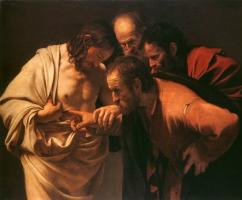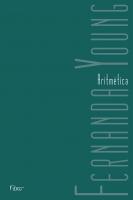Art nouveau (modernist art): characteristics, representatives and works
The art nouveau, modernist art or modernism was an international artistic and decorative movement, developed between approximately 1890 and 1914. The ‘new art’, like its name in French, was about an original, youthful and modern style. He encompassed all the arts, although he especially excelled in architecture and applied arts.
The background of the art nouveau can be found in the English movement Arts & Crafts (‘Arts and crafts’), founded by William Morris in 1861, which revalued traditional crafts and nature against increasing industrialization. The art nouveau also valued applied arts and nature, but unlike the Arts and crafts, took advantage of the materials and techniques available in the industrial age to create a modern style.
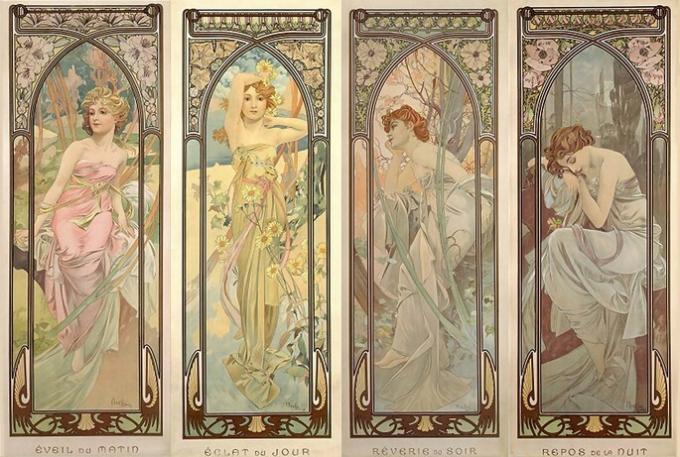
The importance of this movement lies in the fact that it was the last to engage in the observation of nature and the first to establish a link with the industrial age. Thanks to this, he not only closed the 19th century and opened the 20th, but also prepared the transition between two totally different artistic eras. Let us know its characteristics, representatives and works below.
Features of the art nouveau
The academic art of the 19th century was dominated by historicism, particularly in architecture (Neoclassical, Neo-Romanesque, Neo-Gothic, Neo-Byzantine, etc.). The art nouveau He reacted against that and proposed a modern style proper for the time. He tried to free himself from imitation and bet on an urban style that radiated in all the arts. In this way, it accompanied the interests and tastes of the bourgeoisie. From there arose a deep desire for originality and freedom that defined the characteristics of the movement. Let's see.
Inspiration from nature

The artists of the art nouveau they were inspired by the forms of nature. It was not simply about portraying animals or plants. The modernists did not imitate nature. They observed it, studied it, and used its formal principles to search for new ideas. For this reason, they studied the stems, roots, rock formations, skeletons, shells and all kinds of elements. From there they took the lines and geometric shapes that gave the new style originality and beauty.
Mastery of the undulating line
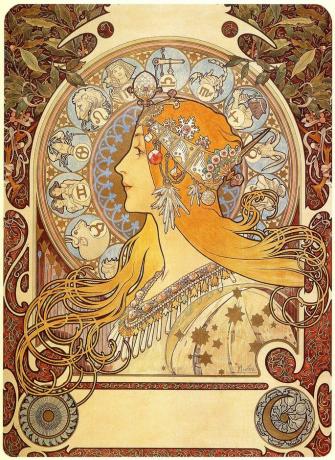
Note the use of wavy lines superimposed on geometric patterns.
Since in nature the straight line does not exist, the art nouveau he adopted the undulating line as a distinctive feature, both in the applied arts and in the fine arts. It manifested itself in two aspects, frequently superimposed: one of vegetal inspiration, with asymmetric, sinuous and lattice lines, and the other based on geometry.
Asymmetry and dynamism

Asymmetry was another common feature in art nouveau. This characteristic made it possible to accentuate the feeling of dynamism and lightness with which modern times were interpreted.
Eclecticism
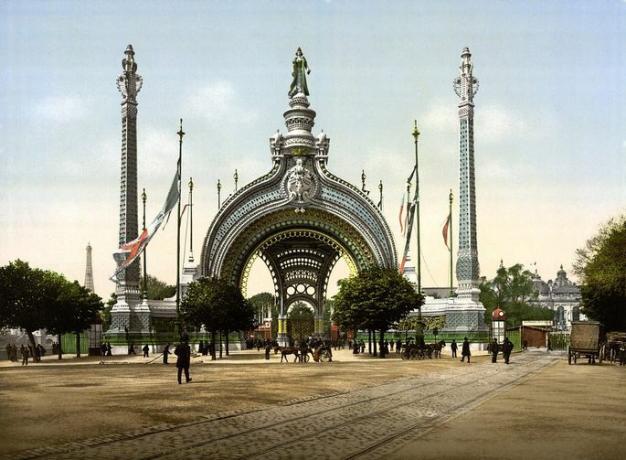
Modernist art was also characterized by the variety and mixture of styles. Instead of a uniform aesthetic, he favored various formal solutions under the influence of different aesthetic currents, such as Japanese art, Indian art, symbolism, etc.
Ornamental wealth

In the art nouveau decorative or ornamental elements proliferate, through which rhythmic and harmonious compositions are procured. The artists applied the line in concentric circles and especially the effect coup de fouet. This consists of the undulation of a long line reminiscent of the blow of a whip.
Taste for the elegant, the luxurious and the exotic
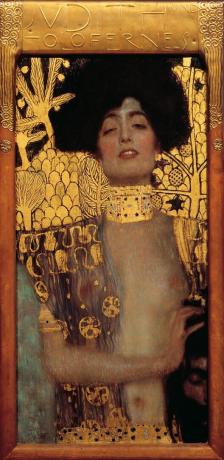
The art nouveau he is refined, luxurious and elegant. Use expensive materials and go for fine and delicate finishes. He also shares the same taste for Japanese art as other contemporary movements, such as Symbolism and Post-Impressionism. All of this makes the art nouveau an esthetician style, where the enjoyment of beauty is the supreme value.
Materials and techniques of the industrial age

Materials such as concrete, wood, iron and glass can be seen in the image.
The artists and designers of the art nouveau they valued the techniques available in the industrial age. For example, mechanical reproduction, woodcut and poster design. They also took advantage of new materials or gave new use to those already known. Some common materials in the art nouveau they were iron, ceramics, glass, crystals, wood, among others.
Modernist painting or art nouveau
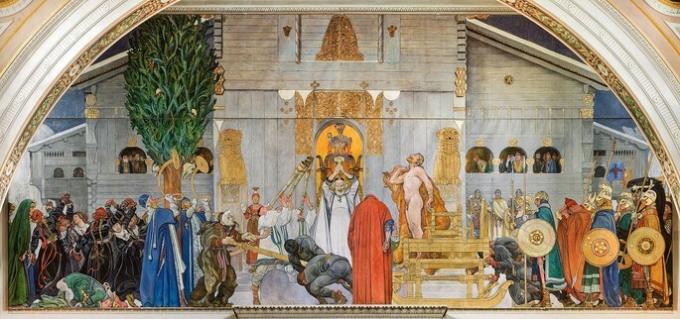
The painting of art nouveau it is also known as modernist painting. It coincided generationally with Post-Impressionism and was inspired by Symbolist literature. Influenced by Jean Moréas's symbolism, he emphasized the imagination, the dreamlike, the bizarre, and the artificial, and rejected the historical or everyday themes of academic art. They also gave space to sensuality and eroticism.
The painters of art nouveau They did not share a unified style, but they did share some common traits. Among them:
- pronounced contours;
- wavy and intertwined lines;
- plant motifs;
- decorativeism.
In addition to painting as a specific discipline, the art nouveau He was present at the rise of illustrations and graphic design, which represented a true revolution in its time, as can be seen in the work of Aubrey Beardsley and Alfons Mucha.
Architecture in the art nouveau
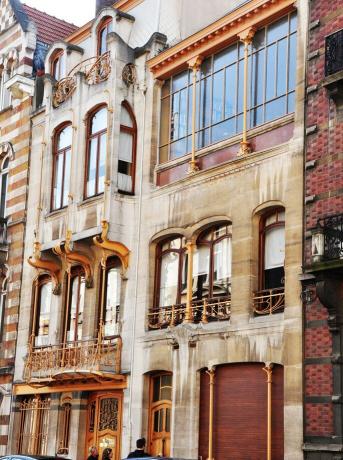
Modernist architecture had as its starting point the design and execution of the house of Víctor Horta, a Belgian architect who revitalized the design of the late 19th century. The house stood out for its vitality and aesthetic freedom.
The architects of this period turned their attention to the geometric forms present in nature, such as hyperboloid, helicoid and paraboloid figures, among others. For example, the spirals of a snail are helical in shape; leg bones are hyperboloid in shape and a tree leaf (or potato chip) is paraboloid in shape.
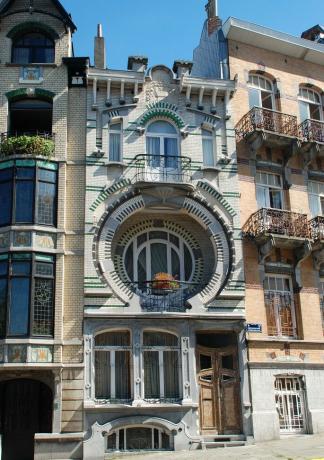
Note the overlapping of wavy lines and geometric elements.
Along with this, the architects lightened the walls and exposed the smithy. Thus, they availed themselves of an innovative use of iron. They also gave new use to other materials such as glass, ceramics, earthenware and wood, and they reintegrated sculpture into architecture in an innovative way.
Applied arts in the art nouveau

The art nouveau he particularly excelled in the applied arts. We speak of applied arts when artistic values are printed in the design and manufacture of utilitarian objects. They cover disciplines such as ceramics, glass art, cabinetmaking, goldsmithing and graphic design (posters, product packaging, typographies and others).
The artists used motifs inspired by the plant kingdom to embellish the objects. They also favored the curved line over the straight line, although always based on the geometric study.
Sculpture of art nouveau

In modernist art, sculpture was almost always integrated into architecture, since this alliance was what allowed, precisely, to renew the aesthetics of the 19th century. In this regard, the art nouveau reminds us of medieval art.
However, there were expressions of exempt modernist sculpture (that is, independent), despite not having been the fundamental interest of the movement. Like the rest of the arts, it was highlighted by the undulating and sinuous line, in order to create a dynamic effect. Asymmetry, a taste for exotic elements, eclecticism and sensuality are also appreciated.
Artists and works most representative of the art nouveau
Victor Horta (1861-1947)

Belgian architect, considered the promoter of modernism in architecture. His works covered a wide variety of projects, such as housing, warehouses and political centers. Its revolutionary concept of interior layout was characterized by spatial fluidity. Some of his works are the Tassel House, the Solvay House, the Horta House, the People's House and the Hotel Autrique.
Henry van de Velde (1863-1957)
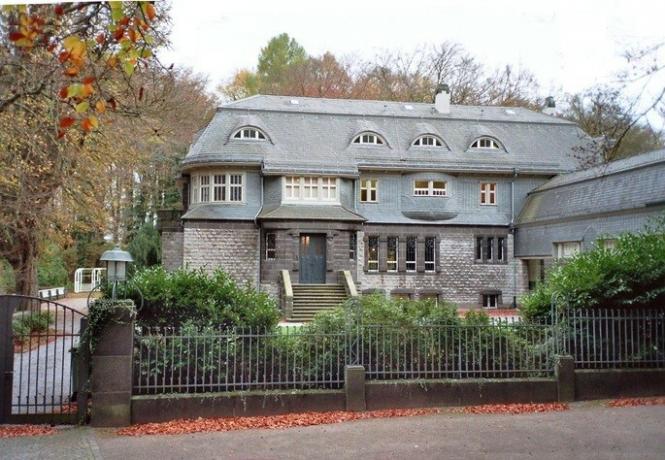
Belgian architect, painter and industrial designer, promoter of modernism. For him, design was a total concept, integrating architectural design with industrial and interior design. Some important works within the style were the Villa Hohenhof (Hagen), the Sanatorium Staircase (Trzebiechadow) and the Van-de-Velde building (Weimar).
Antonio Gaudí (1852-1926)

Spanish architect. He has attracted attention not only for the beauty of his works, but also for the particular methods of projecting his designs, based on models rather than plans.
He distinguished himself from other modernists in his interest in studying historical styles, particularly the Gothic. However, he did not intend to revive it but to use it to expand the creative possibilities of the new art.
Thanks to his research, which included the mechanical analysis of structures, he developed a completely original and innovative language. Among his best-known works are the La Sagrada Familia Expiatory Temple, Güel Park and Casa Batló.
He may interest you: Basilica La Sagrada Familia by Antonio Gaudí
Héctor Guimard (1867-1942)
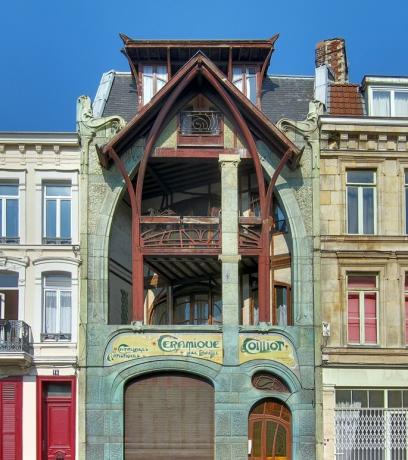
French architect. He was noted for his attempt to imitate the forms of nature in his buildings, and made the curved line a distinctive element. His imagination applied to the interior and exterior decoration of his buildings won him the Façade Competition of the City of Paris. Some of his best-known works are the Hotel Mezzara, the entrances to the Paris Metro and the Maison Coilliot, among others.
Lluís Domènech i Montaner (1849-1923)
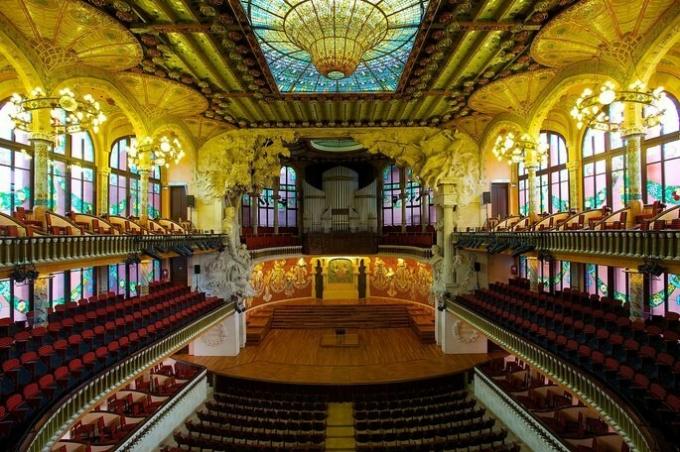
Spanish architect, also related to politics. In his works the rich ornamentation is combined with the rationality of the structures. Among his best-known works are the Palace of Catalan Music, the Castle of the Three Dragons and the Hospital de San Pablo.
Charles Rennie Mackintosh (1868-1928)
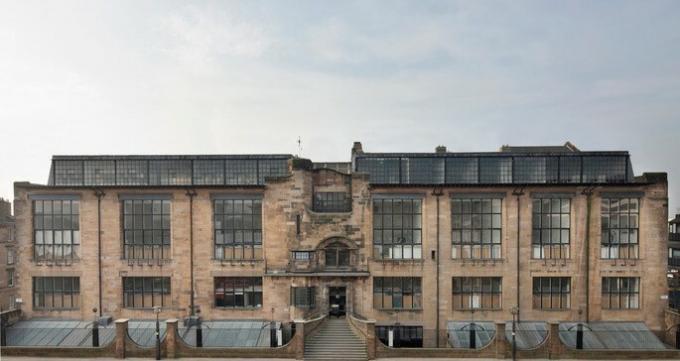
Scottish architect and watercolorist. He got started in the movement Arts and Craft. In time, he adopted the style art nouveau. He was inclined to geometric shapes and a taste for straight lines, thereby conquering his own style. Among his best known works are the Glasgow School of Art, the Hill House in Helensburgh and the Mackintosh House, which he designed with his wife, architect Margaret Macdonald Mackintosh (1864-1933).
Louis Comfort Tiffany (1848-1933)
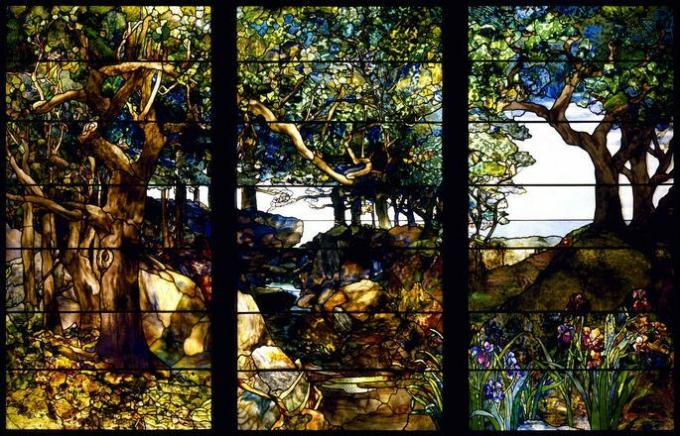
Industrial designer, interior decorator and American painter. Noted for his work on glass (especially the line of lamps that bears his name), although he is also known for his paintings and designs on ceramics and jewelry. Among his works stand out Wooded landscape in three panels; Tiffany glass Y Flowers, fish and fruit.
Renée Lalique (1860-1945)
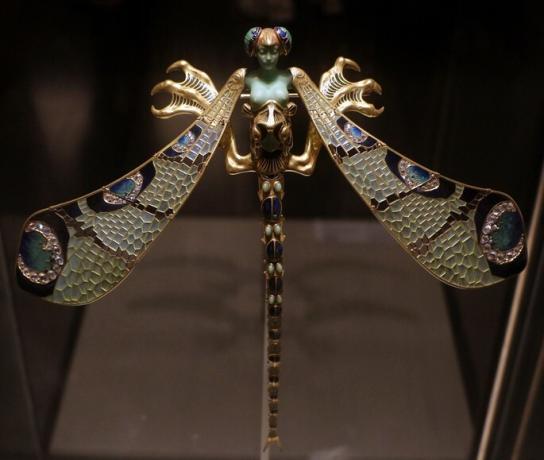
French designer, jeweler and glazier. He developed a series of highly recognized jewelry pieces, as well as chandeliers, perfume bottles, watches, and all manner of utilitarian objects. He was famous for being the first to sculpt in glass. Among his works, the pieces of goldsmithing stand out Tiara Y Dragon-fly, which are part of the Gulbenkian collection.
Alfons Mucha (1860-1939)
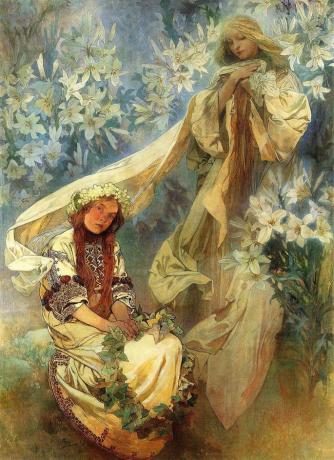
Czech painter, illustrator, designer and sculptor. Widely recognized for the representation of women surrounded by plant elements. In addition to his pictorial works, he excelled in poster art, tapestry design, jewelry, wallpaper, and other items. Among his works are: Destination, Winter night, poster Perfect Cycles and wrapping of Savonnerie de bagnolet.
Aubrey Beardsley (1872-1898)
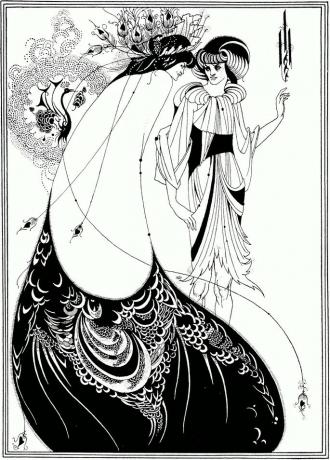
British painter and illustrator. His preferred technique was ink drawing, which allowed him to work with areas of contrast. He dealt with mythological, historical and erotic themes. His aesthetics had symbolist, hedonistic, and fatalistic features. Among his best known works are the illustrations for the work Salome, by Oscar Wilde, and for Lysistrataby Aristophanes.
Gustav Klimt (1862-1918)

Austrian painter. Associated with symbolism and the Viennese modernist movement. His style was characterized by rich ornamentation, sensuality and luxury, which he introduced through the use of gold dust. Among his best-known works are The kiss, Portrait of Adele Bloch Bauer I, The Tree of Life Y Hope.
See also The kissby Gustav Klimt
Fernidand Hodler (1853-1918)

Swiss painter. Representative of symbolism and the art nouveau, whose work acquired some expressionist features. He was known for a style that he called parallelism, which consisted of symmetrically grouping the figures around a reference center. Among his works stand out The night Y The consecrated.
Historical context of art nouveau
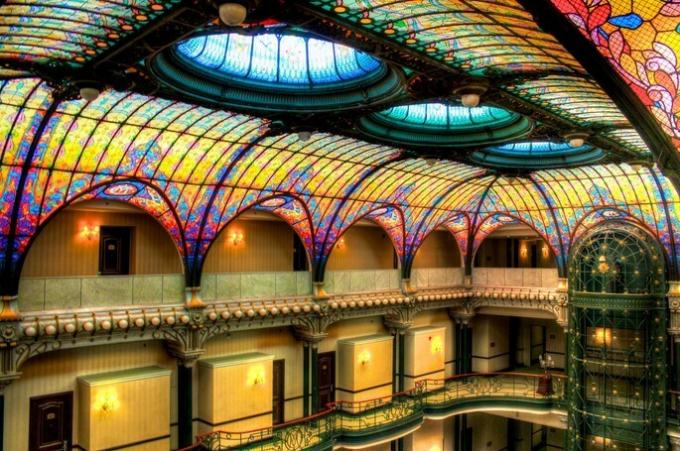
At the end of the 19th century, the industrial revolution was already consolidated. The context was marked by great inventions that revolutionized the world: the phonograph, the automobile, gramophone, bar of soap, aspirin, cinematograph, airplane, and all kinds of machinery.
Multiple currents circulated in art such as symbolism, post-impressionism and movement Arts and crafts, just to name a few. In industrialized Europe there was novelty and dynamism, and the art nouveau it aligned itself with the desire for modernization of the burgeoning bourgeoisie. Soon, the style spread its influence to America.
Name art nouveau it came from a store called La Maison de l’Art Nouveau, opened by Siegfried Bing in Paris in 1896. The movement was also known as Sezessionstil in Austria, Liberty or Floreale in Italy, Paling stijl in Belgium, Jugendstil in Germany, Modern Style in English-speaking countries and modernism in Spain. In Latin America it is often used art nouveau to distinguish it from Hispano-American modernism, a literary movement of independent origin.
Despite its modernizing and bourgeois drive, the art nouveau it did not become a mass style. This was a consequence of the complex modes of production and the high cost of its materials. Around 1910 it went into decline, while the art deco it made its way.
After the start of the First World War in 1914, the art nouveau it would come to an end in Europe. Instead, his influence would remain in America for a few more years.
See also:
- Art deco
- Hispanic American Modernism


